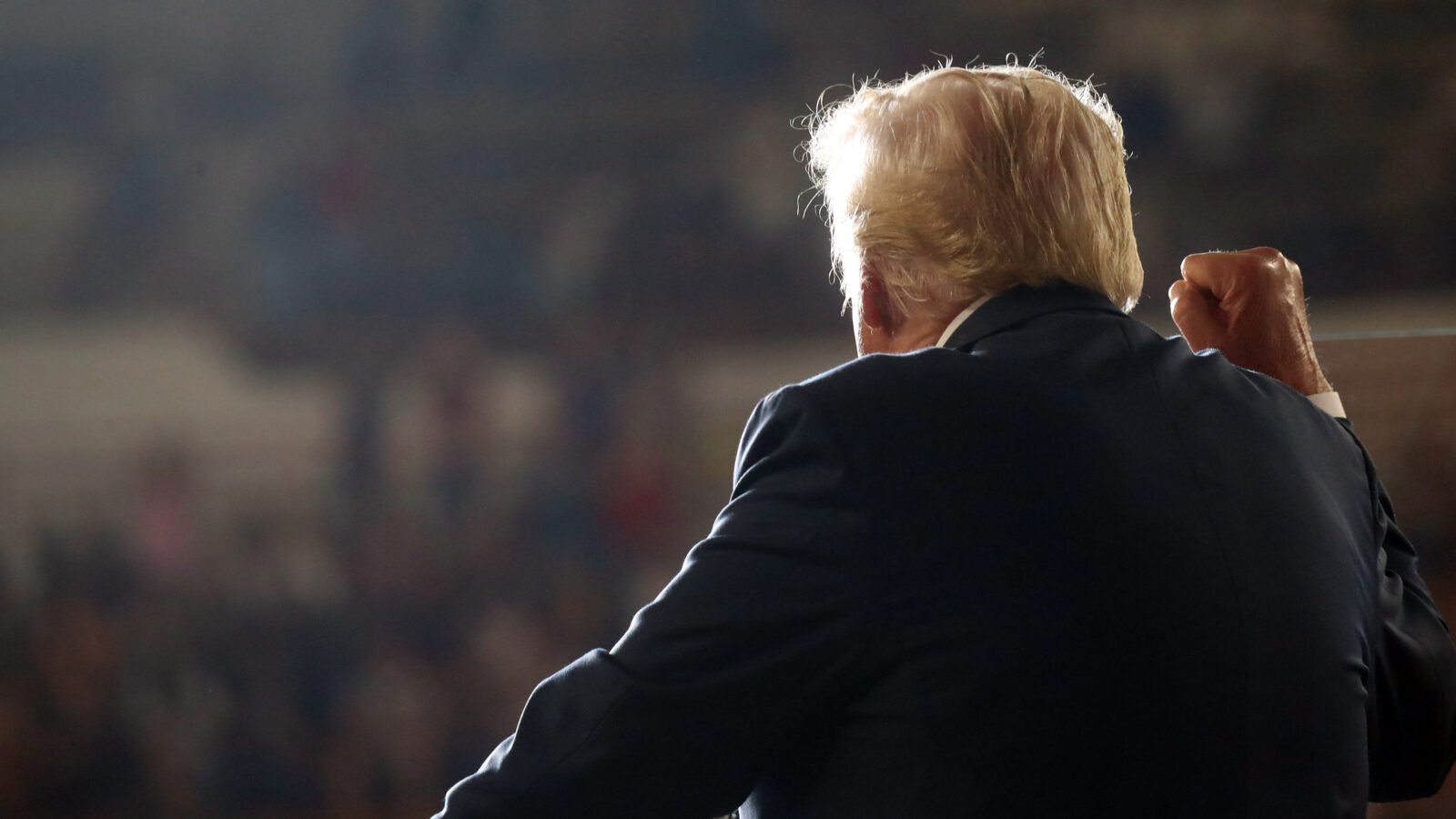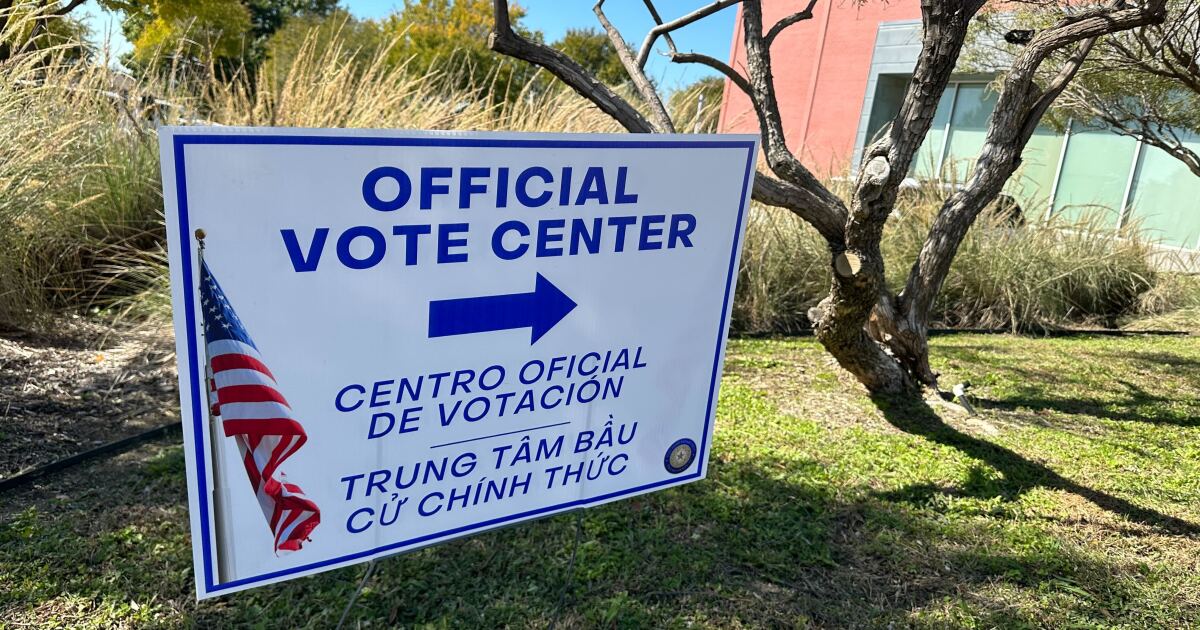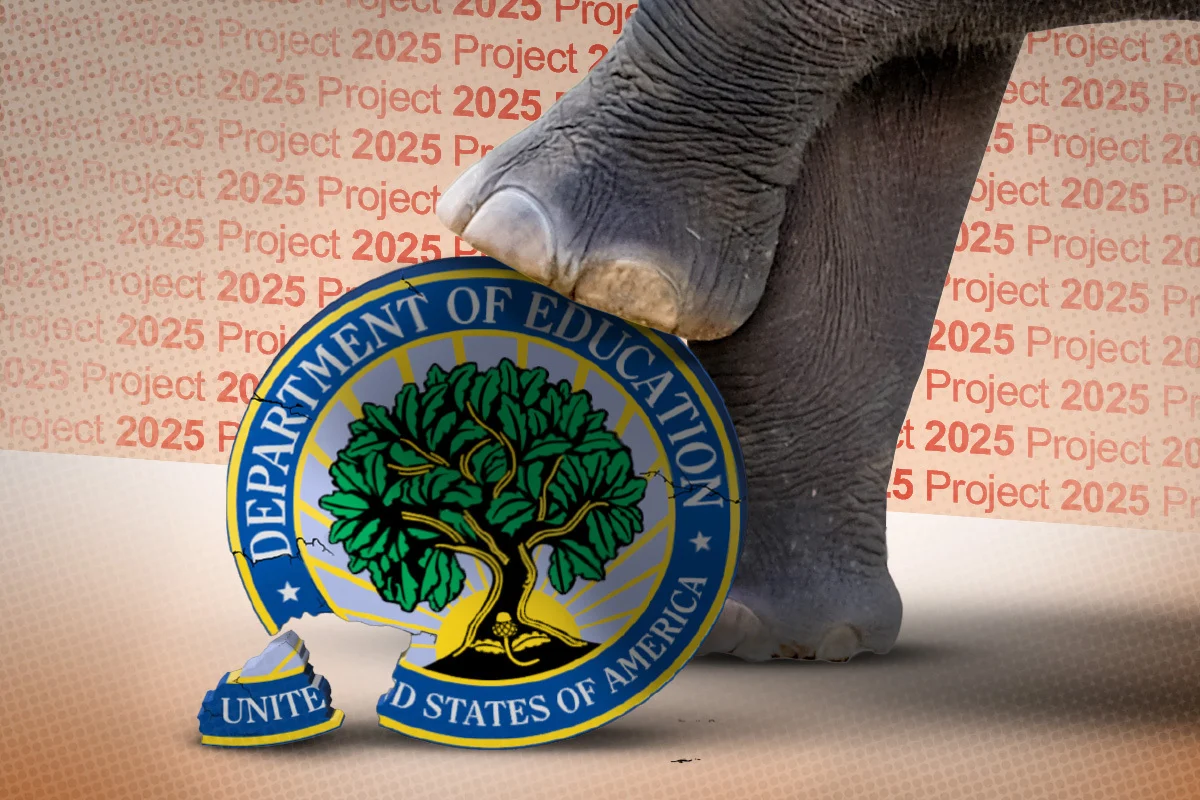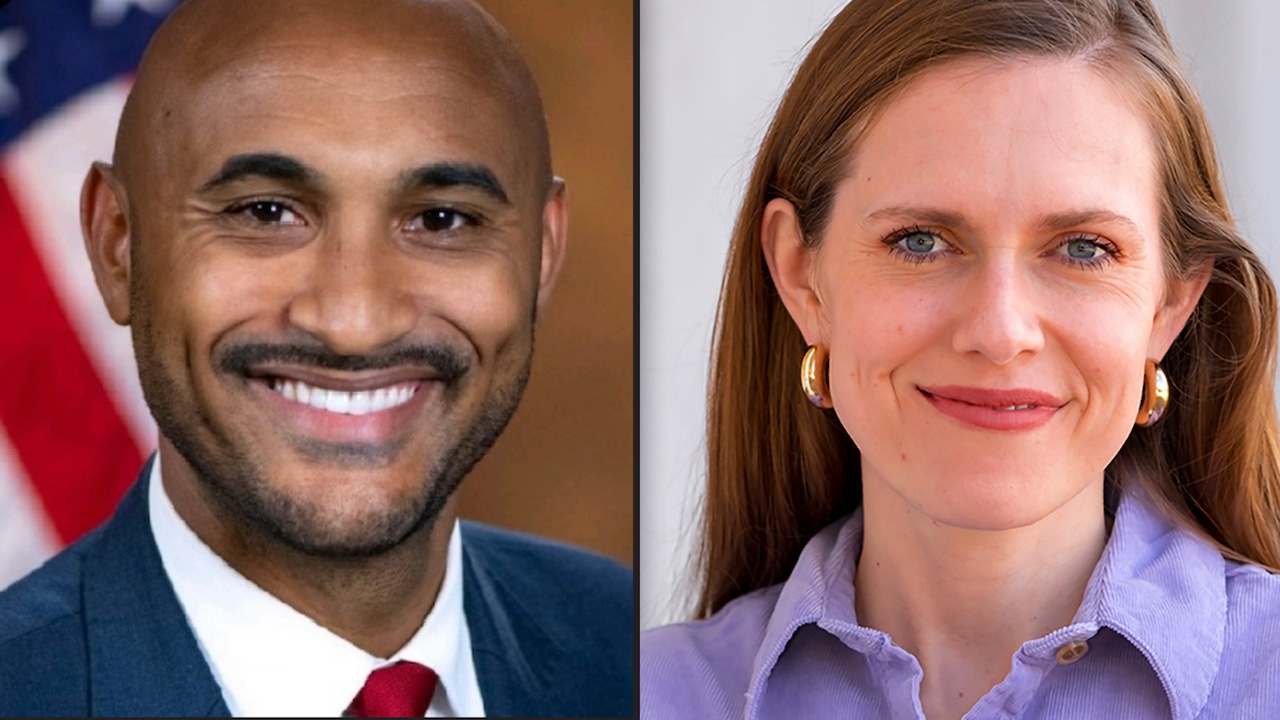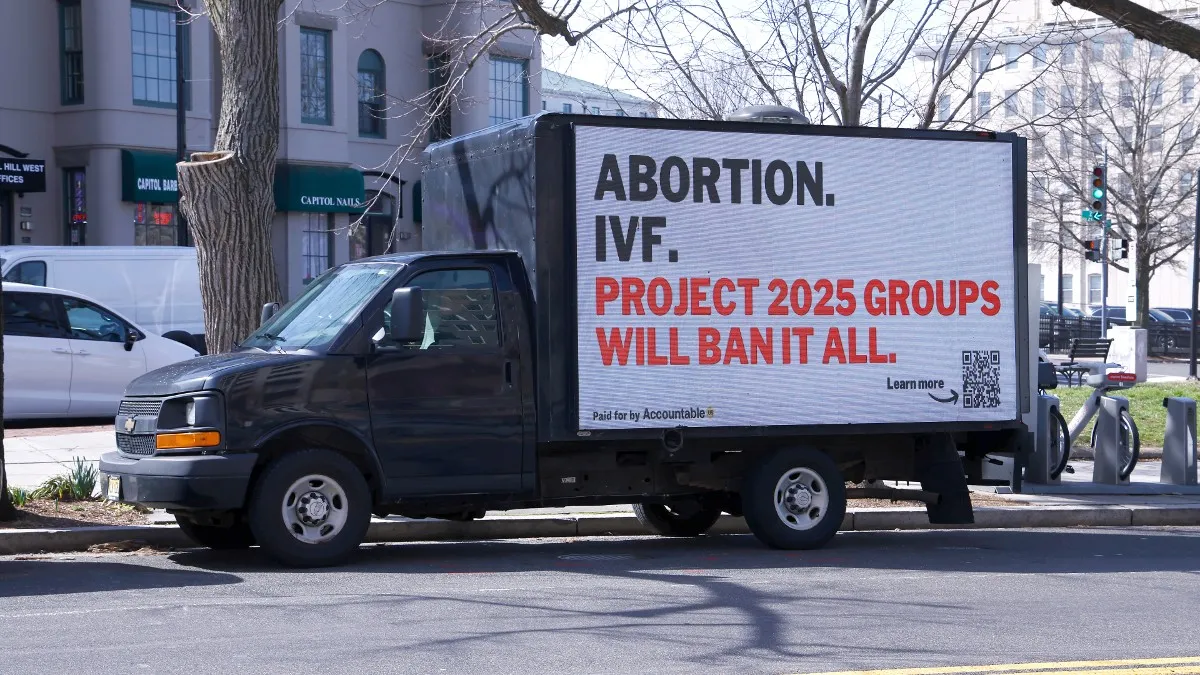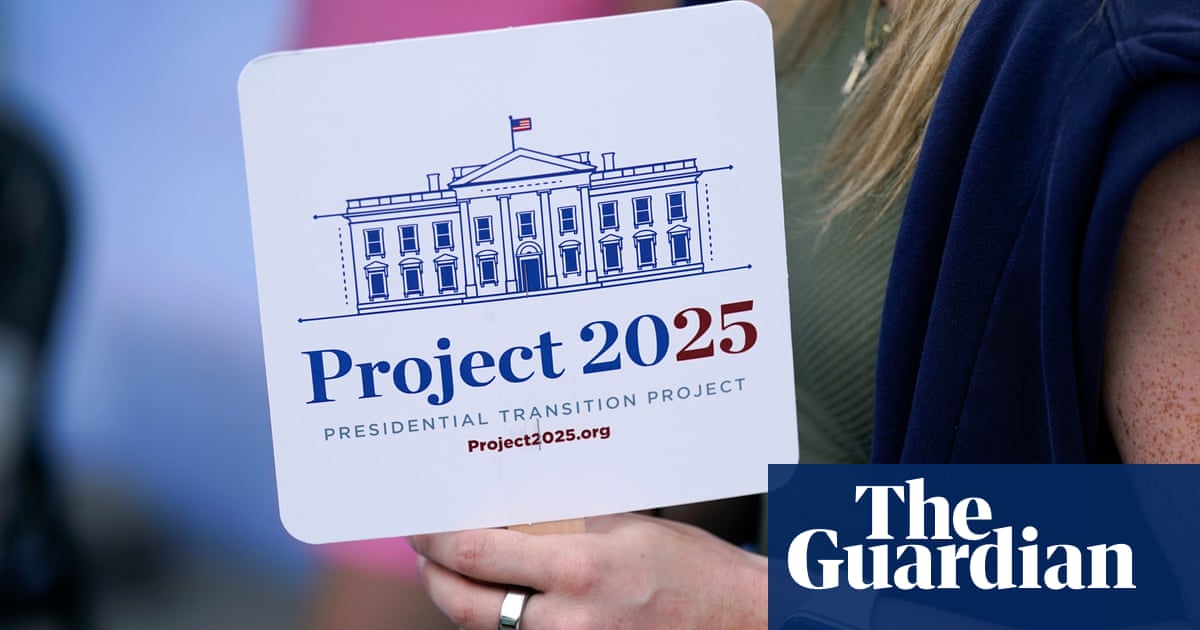Originally by at STAT
Former President Trump has made it abundantly clear that nobody else speaks for him.
That hasn’t stopped Democrats from trying to tie Trump to a compilation of policy suggestions led by the conservative Heritage Foundation called Project 2025, even though Trump himself has repeatedly disavowed the document. The document has drawn outsized attention since some former Trump aides participated, including a civil rights lawyer who led the health section and focused mostly on aggressive abortion restrictions.
But there may be more reliable indicators of Trump’s plans on health care policy. Former Trump White House economic adviser Theo Merkel, who’s now working on health policy at the right-leaning Paragon Health Institute and the Manhattan Institute, said there’s only one place to look for Trump’s policies: what actually comes out of the former president’s mouth.
“The first and best source of what a future Trump administration would want to do — I’m not telling you anything shocking here — is the former president himself,” he said.
Though Trump’s website features a Republican party platform sparse on details about health policy, STAT analyzed videos of Trump speaking in an “Agenda47” series produced by his campaign between summer 2023 and spring 2024, as well as campaign statements, to assemble a picture of what a Trump administration could mean for health care.
Given that Trump is not a typical conservative Republican, that perspective is reflected in his health policy stances. In some ways he’s more moderate: He’s been reluctant to push for a federal ban on abortion and willing to attack pharmaceutical companies. In others, he’s more right-wing. He’s proposed imposing the death penalty on convicted drug traffickers, and expelling from Medicare and Medicaid any hospital or facility that provides gender-affirming care to minors.
STAT reporters interviewed experts in their respective subject areas to understand what they make of Project 2025, and what Trump’s personal proposals on health care could mean for Americans.
Why GOP health care experts call Project 2025 ‘a red herring’
Project 2025’s health proposals included many hardline measures on abortion such as renaming the Department of Health and Human Services the “Department of Life,” revisiting the approval of the abortion pill mifepristone, and excluding Planned Parenthood from Medicaid. Other recommendations were more mundane, like deregulating lab-developed tests, tweaking Medicare pay policies, and reforms to little-known drug discount programs.
Prominent GOP health care experts who spoke with STAT aren’t treating it as a serious blueprint for a future Trump administration — even the ones that helped with the project.
For example, Joe Grogan, who served as a health policy adviser in Trump’s White House, is listed as a contributor to Project 2025. He said he only participated in one large group phone call, and didn’t read the document before signing onto it.
“To me, it was not a seriously well done document to begin with, and the campaign has blown it up,” Grogan said. “It’s a red herring.”
Michael Cannon, a libertarian health policy expert at the Cato Institute who also participated in calls that shaped the creation of the document, called it a “Democratic fever dream” that a future Trump administration would use Project 2025 as its policy blueprint.
“We should look at Project 2025 for what it is, which is an attempt by a bunch of conservatives to try to get the President’s attention, and an attempt that has not worked,” Cannon said.
Even a co-editor of the Project 2025 policy document called the idea that the document was a statement of policy for a Trump administration “unfair and inaccurate,” given it was released before Trump was the Republican nominee and releasing policy recommendations for incoming administrations has been an exercise the think tank has undertaken since 1980.
“It’s false and disingenuous to call this Trump’s blueprint,” said Steven Groves, a fellow at the Heritage Foundation who also served in various roles in the Trump White House.
Trump himself has vehemently disavowed Project 2025 as well. In a recent Fox News appearance, he called much of the document “ridiculous.”
“It has nothing to do with me whatsoever. I know nothing about Project 2025. I have not seen the document. I don’t intend to really see the document. It’s a group of people who got together and wrote some kind of a dream document for them but it has absolutely nothing to do with me,” Trump said.
Since Trump made those comments, Project 2025 has largely fallen apart.
Trump on drug pricing
During his first term, Trump repeatedly railed against the pharmaceutical industry for charging higher drug prices to American consumers than to patients in other countries.
He signed an executive order to make sure that Medicare didn’t pay more for physician-administered drugs than other developed countries. The Biden administration ultimately rescinded the policy following a court order that stopped the program from going into effect.
But Trump hasn’t let it go, he indicated in a video on his campaign website. He promised to sign an executive order to “end global freeloading” by the pharmaceutical industry on the first day of his future presidency.
“Under my policy, the United States government will tell Big Pharma that we will only pay the best price they offer to foreign nations, who have been taking advantage of us for so long— the United States is tired of getting ripped off,” Trump said.
He may have more options in a future administration, as Democrats in 2022 gave the government even more power to directly negotiate drug prices in Medicare.
“It strikes me as infinitely more likely that the Trump administration would maintain Medicare negotiation and try to use that as a mechanism to implement their most favored nation idea,” said Benedic Ippolito, a senior fellow in economic policy studies at the right-leaning American Enterprise Institute.
Gerard Anderson, a professor of health policy and management at Johns Hopkins University, said some version of Trump’s idea could help bring down prices for drugs that haven’t been on the market long enough to qualify for the negotiation program, too.
“I think full speed ahead would be my approach here,” Anderson said. “There is no reason why the U.S. should pay three to four times more for an identical drug.”
To further his vendetta against drugmakers, Trump also proposed banning regulators from taking jobs with companies “they deal with and regulate, such as Big Pharma.” Trump in his last administration hired former pharmaceutical company executives for prominent health care positions. — Rachel Cohrs Zhang
Trump on gender-affirming care
When Trump accepted the GOP presidential nomination, his speech contained no mention of gender-affirming care and the movement to ban it that has ballooned since his time in office. But the former president speaks decisively in a video on his campaign site about what he calls “the left-wing gender insanity being pushed on our children.”
Without evidence, Trump categorizes gender-affirming care as “child abuse.” But “that description has nothing to do with the model of care that many people benefit from,” said Meredithe McNamara, an assistant professor of pediatrics and adolescent medicine specialist at Yale University.
Studies have shown that adolescents who receive gender-affirming care such as hormones generally have better mental health than they did before treatment. All major medical associations in the U.S. oppose bans on gender-affirming care and recommend supportive care for trans people.
If elected, Trump has pledged to issue an executive order on his first day “instructing every federal agency to cease all programs that promote the concept of sex and gender transition, at any age.” The former president also said he will ask Congress to create legislation stating the government only recognizes two genders — male and female — assigned at birth.
These promises indicate that while much of Trump’s messaging around trans health focuses on children, his policy agenda would have an impact on trans people of all ages, experts said. Already, 24 states have bans on both gender-affirming hormones and surgery for youth (a handful have been blocked by courts), and many have seen proposals to limit care for adults as old as 26.
While Trump has distanced himself from Project 2025 broadly, his stance on gender-affirming care is similar to the missive, which explicitly disavows trans health care. “There is no daylight between this proposal and Project 2025,” said Kellan Baker, executive director of the Whitman-Walker Institute, a nonprofit focused on LGBTQ+ health care.
Trump also plans to expel from Medicare and Medicaid any hospital or facility that provides gender-affirming care to minors, he says in the video.
“What, essentially, Trump is saying here is that if you provide health care to transgender people, you will be punished,” said McNamara. — Theresa Gaffney
Trump on the addiction and drug overdose crisis
Trump cast the opioid crisis as a major focus of his first term, empaneling a bipartisan commission of governors and lawmakers to make recommendations on how to combat addiction and signing the SUPPORT Act, which included measures to expand access to addiction medications and increase treatment access for pregnant women and incarcerated people, into law. His running mate JD Vance, meanwhile, has used his upbringing in an Ohio town decimated by drug deaths as the foundation of his public persona.
Still, drug overdoses increased early in Trump’s term and exploded during the Covid-19 pandemic, his final year in office. They have continued to climb sharply under Biden, and Trump has used record deaths caused by the fentanyl crisis as a means of attacking Biden on border security.
His 2025 agenda says little about treatment and nothing about harm reduction. Instead, it is highly militaristic: It pledges a naval embargo aimed at preventing fentanyl from entering the U.S. and, most menacingly, pledges to impose the death penalty on convicted traffickers and drug dealers.
But while some lawmakers and voters may find enforcement-first policy appealing, the agenda has left Geoffrey Laredo, a policy consultant who served nearly two decades as a senior adviser at the National Institute on Drug Abuse, “extremely concerned” that Trump isn’t prioritizing policy based on which strategies actually are known to work.
“What I think is most important in drug policy is scientific research and evidence,” he said. “This is all much too important to simply rely on our opinions.”
Notably, the Trump agenda does include a heavy emphasis on helping people in recovery get and keep jobs. It also promises paid leave for anyone providing care to a family member fighting addiction — a provision that, thanks to the Family Medical Leave Act, is already standing law, even if it’s only rarely enforced.
Trump’s first term in office did little to suggest he’s serious about bolstering employment opportunities for people with substance use disorders, Laredo said. But the concept is popular in the addiction recovery community.
“If Mr. Trump is elected, and if he and his colleagues are serious about trying to forge partnerships of any type to provide job opportunities and skills training for people in recovery from addiction, I think that’s a terrific idea,” he said. “Perhaps he’s seen the light.” — Lev Facher
Trump on chronic illness
Chronic illnesses affect a growing share of American children, and Trump’s health care agenda says he would assemble a presidential commission to study the rise in these conditions.
“Every year, we spend hundreds of billions of dollars to treat these chronic problems rather than looking at what is causing them in the first place,” Trump says in a video posted to his website. “Is it the food that they eat? The environment that we live in? The over-prescription of certain medications?”
Trump casts blame on the pharmaceutical industry in the video, saying public health officials are too close with drugmakers and special interests. The commission he proposes would be filled with “independent minds who are not bought and paid for by Big Pharma,” he says.
Experts agree that chronic disease diagnoses in children have increased over the last several decades, and now affect about 20% of U.S. kids. Severe conditions that interfere with daily activities impact 10-15% of children, compared to less than 2% in the 1970s, according to data from a national survey.
That is a dramatic increase in 50 years, according to James Perrin, a pediatrics professor at Harvard Medical School. But he said that it’s unclear how much of the increase can be attributed to better identification of chronic conditions, as opposed to an uptick in the prevalence of the conditions themselves.
Most of the growth in childhood diseases since the 1990s has stemmed from conditions like asthma, obesity, and mental health disorders. The root causes are often a tangled web of nature and nurture.
“Kids, in general, are living in less healthy environments than they used to be,” said Perrin, who also serves as Distinguished Chair in Pediatrics at MassGeneral Hospital for Children. Changes in climate, poor housing conditions, inadequate nutrition, and financial struggles may all contribute to chronic disease. Researchers say adverse childhood experiences, or ACEs, are an emerging driver of disease and ripe for more research — and responsive policy. — Isabella Cueto
Trump on abortion and reproductive care
Trump boasts that he shaped the Supreme Court that overthrew federal abortion protections. But since that June 2022 decision, he and the Republican party have struggled to assemble an abortion policy that will resonate with most voters. In 2024, 63% of Americans said that abortion should be legal in all or most cases, according to a May survey by the Pew Research Center.
The former president has been vocal this year about softening his party’s stance, which as recently as the 2020 platform included imposing a federal 20-week abortion ban. Trump has maintained that abortion policy should be left up to the states — even when certain state laws go “too far,” as he lamented earlier this year.
In January, Trump blamed Republicans’ poor messaging and hard-line abortion stances for midterm election results. “It was the ‘abortion issue,’ poorly handled by many Republicans, especially those that firmly insisted on No Exceptions, even in the case of Rape, Incest, or Life of the Mother, that lost large numbers of Voters,” he wrote on his social media platform Truth Social.
He echoed these statements on his campaign website in a video urging people to stand by their personal convictions but keep in mind the political landscape. “Like Ronald Reagan, I am strongly in favor of exceptions for rape, incest, and life of the mother. You must follow your heart on this issue,” he said. “But remember, you must also win elections to restore our culture and in fact, to save our country, which is currently and very sadly, a nation in decline.”
The former president recently suggested he deserves credit for moving the Republican party towards a more moderate abortion stance. “I’ve made them much less radical,” he told the National Association of Black Journalists.
Many public health and legal experts argue that even with exceptions, abortion laws can leave some of the most vulnerable populations at risk for serious health complications.
The overturning of Roe v. Wade has also produced “a significant chilling effect on physicians’ ability to apply their best clinical judgment and determine when an abortion may be medically necessary” because they fear criminal or civil prosecution in restrictive states, said Joanne Rosen, co-director of the Center for Law and the Public’s Health at the Johns Hopkins Bloomberg School of Public Health.
Republicans have also stressed in recent months that they will protect in vitro fertilization services, responding to recent blowups over restrictive abortions laws. An Alabama court ruling over fetal personhood in February inadvertently barred IVF until the state legislature passed an exception.
“Under my leadership, the Republican Party will always support the creation of strong, thriving, and healthy American families,” Trump said in a campaign video. “We want to make it easier for mothers and families to have babies, not harder. That includes supporting the availability of fertility treatments like IVF in every state in America.” — Sarah Owermohle
Trump on health care for DACA recipients
If Trump has his way, thousands of people who were brought to the United States as children could have their health insurance options limited.
President Biden in May issued regulations to allow people who had been brought to the United States as children to enroll in health insurance through the Affordable Care Act, including in plans with discounted premiums. The Biden administration estimated that the policy could be available to 100,000 previously uninsured people in the Obama-era Deferred Action for Childhood Arrivals program.
Trump’s campaign called the move “unfair and unsustainable.” Trump tried to end the DACA program while he was in office, but the Supreme Court blocked the move.
Biden’s policy to expand coverage for DACA recipients takes effect on Nov. 1, in time for this year’s enrollment period for marketplace plans. Open enrollment officially ends on Jan. 15, 2025. There’s a chance that if Trump takes office and decides to rescind the rules, that coverage could be jeopardized.
However, Drishti Pillai, director of immigrant health policy at the nonpartisan health policy analysis organization KFF, said it’s unclear how quickly undoing the policy could happen. The regulatory process could take time to unwind, and there could be legal challenges.
“The ‘if and when’ are really uncertain at this point,” Pillai said.
If the policy is rescinded, it’s unclear what the timeline could be for DACA recipients who might have enrolled in plans to be kicked off. Regardless, the prospect of a Trump presidency could have a chilling effect on signups, as Election Day is just four days after the open enrollment period begins, Pillai said. — Rachel Cohrs Zhang
Trump on drug shortages
Trump’s plan to stem drug shortages leans heavily on his previous efforts to bolster domestic manufacturing and to cut off trade with China.
Trump says he would fix drug shortages by using tariffs and bringing back a buy-American executive order. During his administration, he put tariffs on several goods, including personal protective equipment, but they didn’t apply to drugs. In 2020, Trump issued an executive order that required federal agencies to buy American-made drugs and medical devices on the Food and Drug Administration’s list of drugs, ingredients and medical devices that are essential to public health. The products on the FDA list are meant to respond to infectious diseases and bioterror and nuclear threats.
Soon after Biden took office, he issued an executive order that broadened the focus of supply chain resilience to extreme weather events and economic competition. Biden also kept Trump’s tariffs in place.
Looking ahead, one potential difference between Trump’s approach to combating drug shortages versus that of his Democratic opponent, Vice President Kamala Harris, is “the willingness of the Trump administration to consider how to leverage the tax code to further spur domestic manufacturing,” according to Soumi Saha, Senior Vice President of Government Affairs at Premier.
Onshoring and stronger national security are only part of the solution to shortages, experts said, and none of the current drug shortages are due to geopolitical disputes.
Mark McClellan, a former FDA commissioner and current director of the Duke-Margolis Center for Health Policy at Duke University, said cutting off foreign sources of products and ingredients can create shortages if done before building up production capacity elsewhere.
Current drug shortages are mostly the result of policies that encourage hospitals to buy at the lowest price, regardless of whether those prices are sufficient for drug companies to keep making critical drugs, he said.
Read the Original Story
